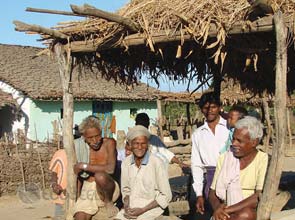India’s rural Base of Pyramid can be a prospective gold mine for clean energy investors, holding more than $2 billion in market potential, according to Indian and American researchers.
A study by India’s Center for Development Finance at the Institute for Financial Management and the United States’ World Resources Institute reveals that the total potential market for the clean energy industry is 97.28 billion Indian rupees ($2.11 billion) annually.
The market is divided into two sectors – clean energy electricity systems and clean energy cooking and light products. Two main segments for each sector were analyzed for the report: decentralized renewable energy enterprises and solar home systems for the clean energy electricity systems sector, and solar lanterns and energy efficient cook stoves for the clean energy cooking and light products sector.
Researchers discovered that decentralized renewable energy enterprises, or energy companies that provide clean power generated primarily from small hydro and waste biomass to a community in a specific geographic region, can yield up to 94.06 billion Indian rupees per year, accounting for more than 95 percent of the forecasted market total.
Meanwhile, the market for solar home systems can produce up to 1.26 billion Indian rupees annually. Individual households typically purchase these photovoltaic systems on credit and customize them to fit their specific electricity requirements.
Energy efficient cook stoves burn solid-biomass cooking fuels 20 percent to 65 percent more efficiently than traditional stoves do. The market for these stoves is worth about 1.11 billion Indian rupees per year, the report estimates.
Lastly, the market for solar lanterns, which provide basic lighting to Base of Pyramid households, is valued at 855 million Indian rupees per year.
The rural Base of Pyramid, which represents about 60 percent of India’s total population, is composed of 114 million households that spend less than 3,453 Indian rupees monthly on goods and services and up to 224 billion Indian rupees annually on their energy needs.
About 45 percent of the country’s Base of Pyramid households still lack access to reliable electricity, while over 85 percent primarily use traditional fuel sources, including firewood and dung, which are harmful to the users’ health and the environment.
With India’s economy expected to achieve gross domestic product growth of 8 percent by this year, its domestic energy demand is anticipated to more than double by 2030, prompting the Indian government to seek for ways to solve the energy crisis, particularly for its Base of Pyramid sector.
The government has provided renewable energy incentives, such as capital subsidies of up to 90 percent, tax holidays, accelerated depreciation and low-interest loans to encourage the development of clean energy services and technologies for its rural poor.
It also launched the National Solar Mission program that aims to establish 20 gigawatts of solar power by 2020, as well as provide 20 million solar lighting systems to replace kerosene lamps in rural communities over the next 12 years.















